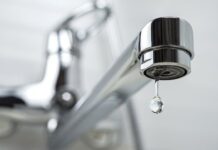
Eric Garcetti, Mayor of Los Angeles, has released the final batch of ‘shade balls’ onto the surface of the Los Angeles Reservoir, marking completion of a US$34.5 million initiative to protect the city’s water quality.
The small, black plastic balls–about the size of an apple and numbering 90 million in total–will help protect water quality by preventing sunlight-triggered chemical reactions, thwarting 1.14 billion litres of evaporation, deterring birds and other wildlife, and protecting water from rain and wind-blown dust.
The Los Angeles Department for Water and Power (LADWP) is the first utility company to use the technology.
“In the midst of California’s historic drought, it takes bold ingenuity to maximise my goals for water conservation,” said Garcetti. “This effort by LADWP is emblematic of the kind of the creative thinking we need to meet those challenges. Together, we’ve led the charge to cut our city’s water usage by 13 percent, and today we complete an infrastructure investment that saves our ratepayers millions and protects a vital source of drinking water for years to come.”
Touted as a cost-effective investment that will help bring the LA Reservoir into compliance with new federal water quality mandates, the city government says the shade balls are expected to save US$250 million when compared to other comparable tools. Those alternatives included splitting the reservoir into two with a bisecting dam and installing two floating covers that would have cost more than US$300 million.
Dr Brian White, a now-retired LADWP biologist, invented the concept of using shade balls for water quality. At US$0.36 each, the shade balls require no construction, parts, labour or maintenance aside from occasional rotation, according to the mayor.
“As the drought continues, it has never been more important to focus on innovative ways to maintain the highest quality drinking water for our 4 million residents,” said Mitchell Englander, City Councillor. “In addition to cutting back on the need to chemically treat our water to prevent natural occurrences like algae, these shade balls are a cost-effective way to reduce evaporation, enough to provide drinking water for 8,100 people for a full year.”






